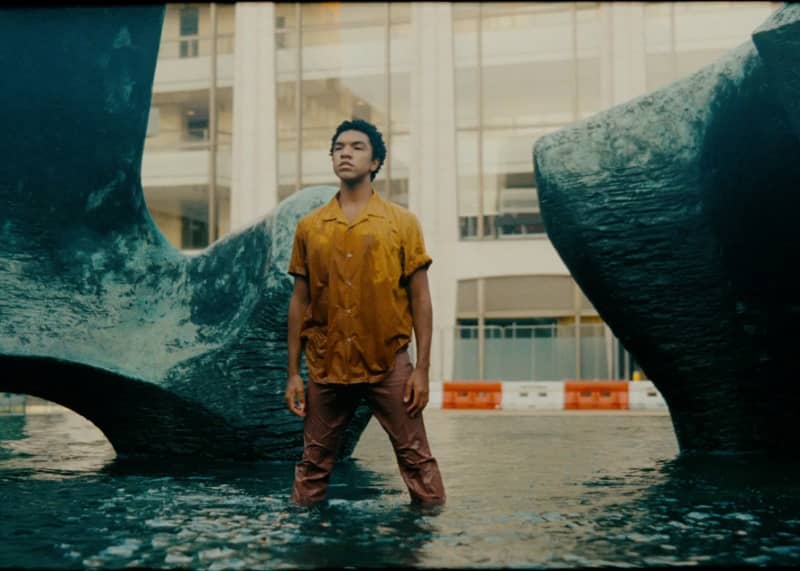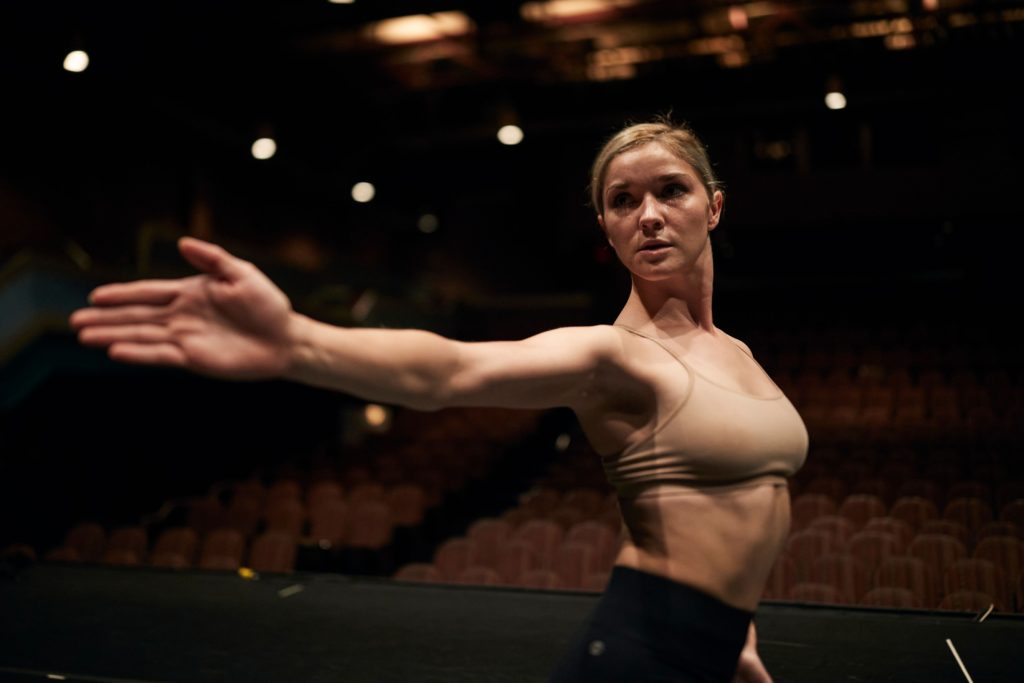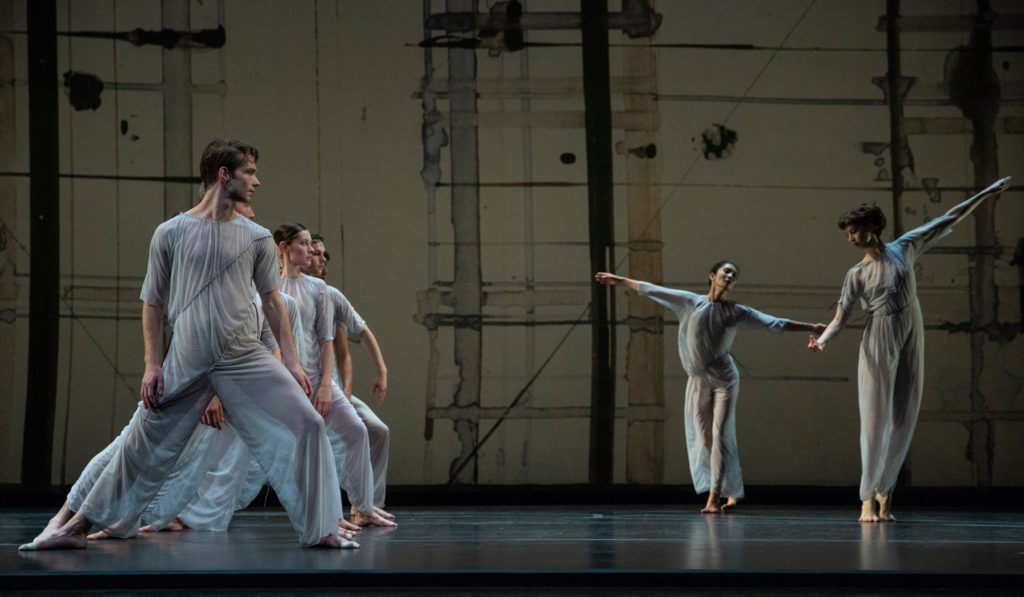VIEWPOINTS – Streaming Diary: City Ballet’s NEW WORKS FESTIVAL, the Joyce’s STATE OF DARKNESS continues, and Pam Tanowitz’s FOUR QUARTETS
- By drediman
- November 3, 2020
- No Comments
This past week was a rich one for dance, at least virtually. Here are my thoughts.

NEW WORKS FESTIVAL
New York City Ballet
New York City Ballet recently unveiled five world premiere works via its weeklong New Works Festival (RECOMMENDED). It was refreshing to see the company engage in new works again, especially after digital spring and fall seasons that relied primarily on the streaming of past performances from its archives. These latest premieres display City Ballet’s ongoing fascination and engagement with the arts world at large, in this case film and architecture (particularly the monumental structures of the Lincoln Center campus). It was a smart idea to release these new dances in the form of stylishly edited short films. As such, the camera becomes an actively participant in the choreography, thereby maximizing the immediacy and visceral energy of the experience for the viewer. However, lasting between only five to ten minutes a pop (fortunately followed by illuminating, comprehensive discussions with the artists involved), the underlying dances largely felt like fragments of ideas rather than satisfying standalone works. The most successful were the final two to be released — Jamar Roberts’ emotive solo Water Rite (danced beautifully in the reflecting pool at the foot of the Vivian Beaumont Theatre by corps de ballet member Victor Abreu) and Thank You, New York (featuring Christopher Grant, Sara Mearns, Georgina Pazcoguin, and Taylor Stanley), Justin Peck’s soulful, aching love letter to a dormant New York. They were the most fully-formed and distinctive of the lot. Other premieres included new works for Sidra Bell (Pixelation in a Wave (Within Wires), featuring Ghaleb Kayali, Emily Kikta, Mira Nadon, and Peter Walker), Pam Tanowitz/Russell Janzen (Solo for Russell: Sites 1-5, featuring Mr. Janzen), and Andrea Miller (New Song, featuring Harrison Coll, Unity Phelan, Indiana Woodward, and Sebastian Villarini-Velez).

STATE OF DARKNESS
The Joyce Theater
Last weekend also saw the continuation of the Joyce Theater’s fascinating and ambitious State of Darkness “festival” (HIGHLY RECOMMENDED), which tasked seven world-class dancers to take on Molissa Fenley’s grueling 1988 solo (set to the heart-stopping rhythms of Stravinsky’s groundbreaking “The Rite of Spring”). During the project’s first weekend, I was particularly blown away by Shamel Pitts’ possessed, terrifying rendition of the dance. This week, the great Sara Mearns was equally breathtaking. Ms. Mearns, a principal with New York City Ballet, has always had the innate ability to bring electricity and a heightened sense of drama to everything she touches, whether it be a classic Balanchine ballet or something as raw and exposing as Ms. Fenley’s solo. She was totally committed to opening and exposing herself to the harrowing existential journey presented by the work, which was evident in the way she flung her body and soul into the relentless choreography. Like Mr. Pitts before her, she danced like her life depended on it, even if it meant sacrificing some of the classical lines that we’ve associated with this important ballerina. After bravely putting herself – and us – through the 35-minute ringer, Ms. Mearns emerged seemingly transfigured on the other side. Collapsing on the Joyce stage at the end of her performance, she was clearly physically exhausted and emotionally shaken by the experience. Other dancers to tackle Ms. Fenley’s work this past weekend was American Ballet Theatre principal Cassandra Trenary, as well as Martha Graham Dance Company’s Lloyd Knight. Of all the dancers I’ve seen dance State of Darkness so far, none of them executed it with as much careful attention to the work’s full range of movement as Ms. Trenary. What was missing, however, was a bit of the drama and penetrating psychological nuance that marked Ms. Mearns and Mr. Pitts’ performances. Mr. Knight, however, brought a different energy to the piece altogether, a seductive sexiness that I don’t think fully gelled with Ms. Fenley’s intention.

FOUR QUARTETS
The Fisher Center at Bard College
One of the most buzzed about dance works in recent years is Pam Tanowitz’s Four Quartets (HIGHLY RECOMMENDED), which I was able to stream last weekend. The evening-length ballet, set to a 1941 book of poems by T.S. Eliot (also entitled Four Quartets), had its sensationally-reviewed world premiere two years ago at Bard College’s Frank Gehry-designed Fisher Center for the Performing Arts (where it was captured on film). Since then, it has embarked on a world tour, receiving equally rapturous acclaim. Eliot’s poetry, which is read live by an orator (Kathleen Chalfant, exceptionally lucid), ruminates the slippery concept of time and is intent on expanding our limited understanding of it (“In my beginning is my end”). In doing so, he eloquently explores ephemerality, a foundational element of live performance, especially dance. Ms. Tanowitz’s choreography has always been clean and devoid of excessive gestures, which lends itself to the concise nature of poetry, while also visually suggesting cursive writing or calligraphy (how appropriate!). Additionally, in using fluidly recurring physical motifs in constant states of rearrangement, Ms. Tanowitz has sensitively structured her dance to reflect the ebbs and flows Eliot’s philosophical musings. For the ballet, accomplished Finnish composer Kaija Saariaho has written an expressive, sparkling composition for small orchestra (played by the Knights with great care), which interacts with the text rather than simply underscoring it. Cumulatively, Four Quartets is disarming, disorienting, and atypically sublime. The original company of nine dancers was exceptional – thoroughly committed to Ms. Tanowitz’s delicate construction, and precise in their execution. The work has yet to play New York (due to obvious reasons), but in lieu of that eventuality, I was happy to have had the opportunity to watch this important work online. I eagerly look forward to seeing it live one day. I suspect it’s the kind of total work of art – melding dance, visual arts, music, literature (much like Mark Morris’s seminal L’Allegro, il Penseroso ed il Moderato) – that grows richer with each successive viewing.

 Copyright © 2024
Copyright © 2024
Leave a Reply